Joan Yeguas
The materials in the Museu Nacional d’Art de Catalunya’s storeroom include works little known to the public and to Art History scholars. One example is Still-life by Antonio Ponce. An oil painting on canvas (38 x 55 cm), it entered the museum in 1962 as part of the bequest of Domènec Teixidó i Casablancas, and that until recently was in Deposit at headquarters of the Friends of the Museums of Catalonia in the Palau de la Virreina in Barcelona. In the bottom right-hand corner the number 302 appears, almost certainly an old inventory reference number of an unknown private collection.
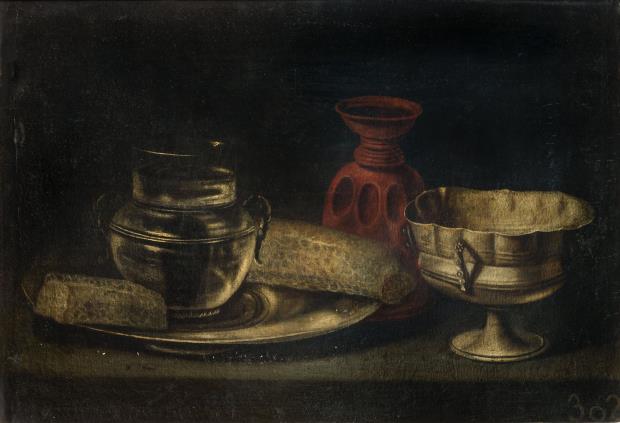
Various objects can be seen in the painting. On the left-hand side of the composition there is a plate, on which there are two sweets, one whole and the other part of one, called pinyonades, a kind of marzipan made with pine-nuts, which we would perhaps call panellets today. Accompanying them, there is a jug full of a clear liquid that should be identified as eau de vie. In the middle of the composition, in the background there is scented water in a red earthenware receptacle – in Spanish it is called a búcaro or barros de las Indias – which is normally associated with earthenware from Tonalá, near Guadalajara, Mexico. Archaeological finds have revealed that this type of pottery was also made in Panama and Chile, and there was also the Iberian peninsular variety that was produced in the workshops of Salvatierra de los Barros, Extremadura. Finally, on the right-hand side of the composition we see a silver bowl, in Spanish called a bernegal, with a wide undulating rim, which was used to drink from in the houses of the nobility during the period of Habsburg rule. In this case it was used for drinking the eau de vie in the jug next to it when eating the sweets.
The nature of the painting recalls part of a composition featuring a luxurious table laid for dining and receiving guests, called a taula parada (laid table) – in Spanish mesa servida – and which can be found in 17th-century Dutch and Spanish painting. One example would be the work Still-life with Laid Table, painted in about 1620 by Juan van der Hamen (Madrid, 1596-1631). This can currently be seen in the permanent rooms of the Museu Nacional d’Art de Catalunya; it entered the museum as part of the bequest of Domènec Teixidó i Casablancas together with the previously mentioned one.

The painting we are analysing, Still-life, was first mentioned in 1947, specifically in the catalogue Flower Paintings and Still-lifes: Paintings from Barcelona Collections III, and it was adjudged to have been done by Francisco de Zurbarán (Fuente de Cantos, 1598 – Madrid, 1664). Later, for an exhibition held in 1963 in Barcelona, dedicated to the bequests and donations made to the museum since 1952, it appeared registered as an anonymous painting. Now, to judge by other stylistic clues we think that the still-life in question should be attributed to the painter Antonio Ponce (Valladolid, c. 1608 – Madrid, c. 1667), a follower of Van der Hamen, related to him through marriage. The two of them specialized in still-lifes for the members of the court in Madrid in the first half of the 17th century.
Contrary to what Dutch painters were doing, presenting laid tables that were deliberately untidy, something that heightened the feeling of consumption and opulence, Van der Hamen and his followers show various types of food and objects arranged scrupulously in order, an aspect that gives the compositions an exaggerated symmetry and alignment, but fairly characteristic of Spanish still-life painting before 1640.
In this case, the plate of pinyonades and the jug of eau de vie refer us to another composition by Antonio Ponce. It is a slight variation on the painting Basket of Sweets, Honey Pot, Glass Receptacles and Chocolate Pot (102 x 156 cm), dated to between 1635 and 1640, conserved in the Museu Maricel in Sitges (inventory number 3.171), and donated by Jesús Pérez-Rosales in 1970. The painting in Sitges is the sum of more elements, many of which can be observed in different works by Juan van der Hamen, and which his follower reproduced or imitated literally on several occasions. Antonio Ponce was a skilful painter, who had learned to combine the different objects that made up this kind of composition. In relation to the painting we are analysing, the plate and the jug are the same, but the pinyonades are inverted: the whole one is on the right and the piece is on the left, whereas in the Sitges painting it is the other way round.
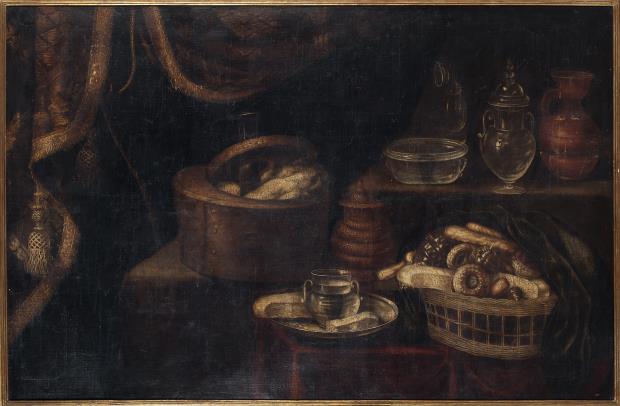


Stylistic and compositional similarities between the painting in Sitges and the one in the Museu Nacional.
There are 28 still-lifes in the Museu Nacional’s Renaissance and Baroque Art collection, 16 of which are from the 17th century, and 13 can be labelled as Spanish Golden Age. Therefore, this interesting still-life emerges to add to the artistic quality of the collection, to the variety of types and sub-genres – it should be catalogued within sweets and cakes – and to the overall view of the painting of that period.
Examples of still-lifes on the theme of sweets and cakes
The painting of sweets is a subgenre of still lifes with food. The idea was to choose objects and food suitable for a snack or refreshments. It is a perfect device and an invitation to taste the great variety of titbits, always accompanied by aromatized or alcoholic beverages. In this case, we illustrate it with some works by Juan van der Hamen in which we can find parallels for comparison, whether sweets (like the “pinyonada” (pine-nut cake) from a private collection) or objects (like the “bernegal” (glass) in the Thyssen-Bornemisza Museum in Madrid.
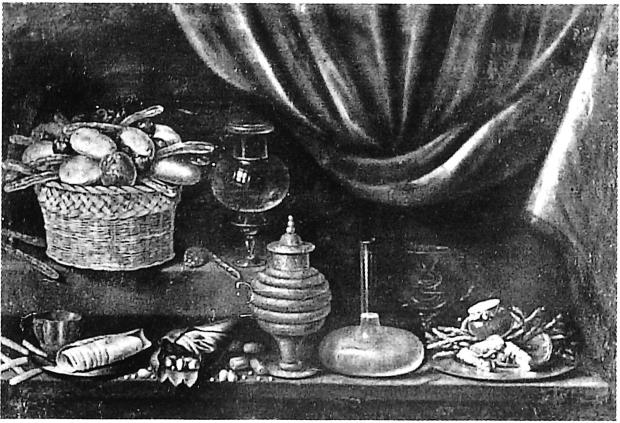
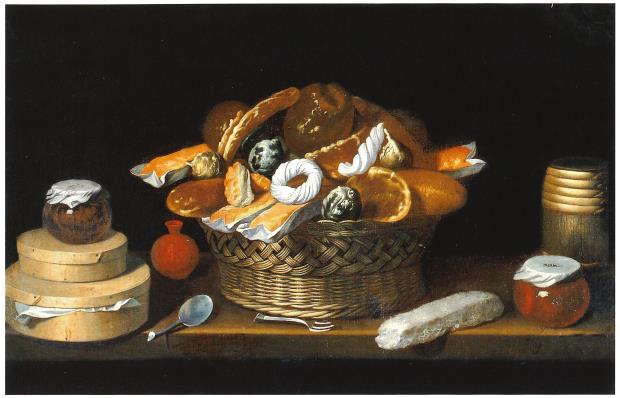
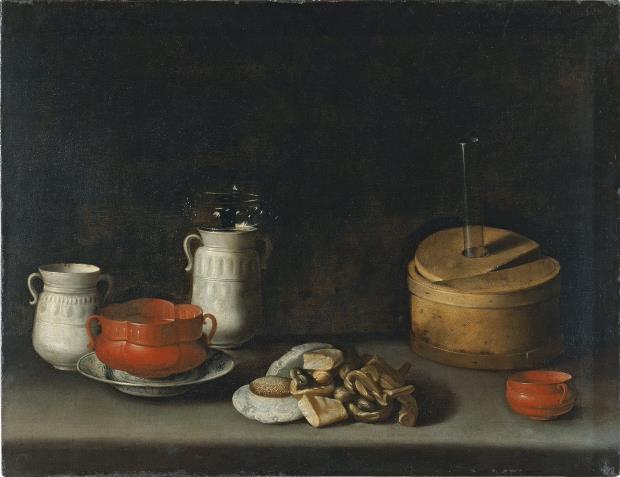
Related links
New display of Renaissance and Baroque
Art del Renaixement i Barroc







